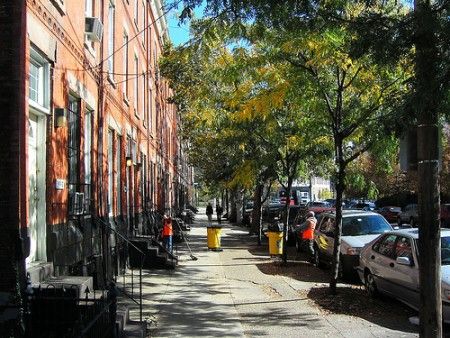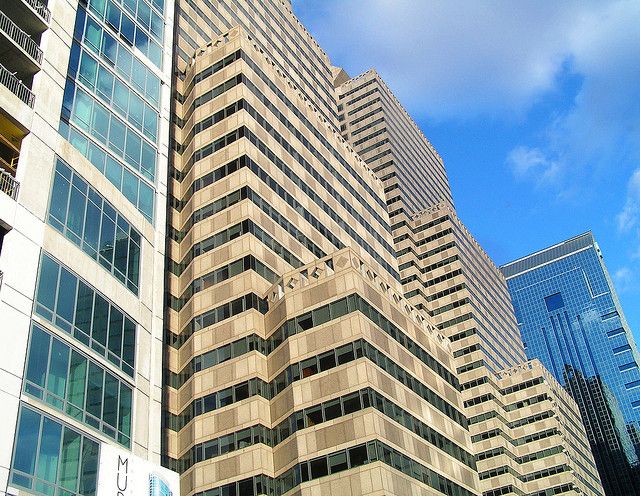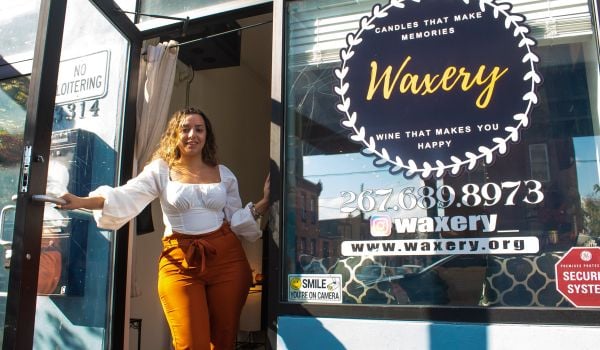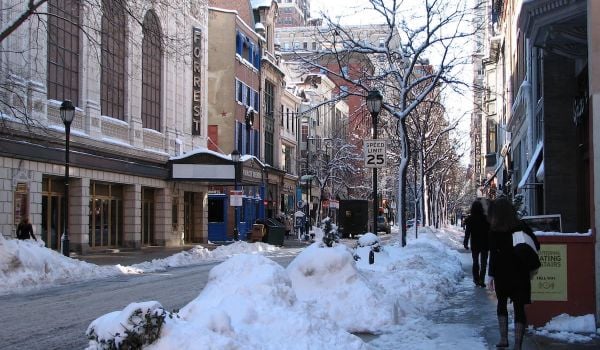In a ceremony yesterday, Philadelphia Mayor Michael Nutter and other civic leaders unveiled the first major overhaul of the city’s zoning code in half a century.
The culmination of an intensive two-year process, the new code incorporates input from thousands of citizens, and dozens of city and community institutions, in an attempt to replace obsolete and obstructive regulations on development.
Frequently cited complaints pointed to archaic and complicated restrictions on building uses, the poorly defined role for community groups, and overly specific or outdated regulations that forced the majority of the city’s building proposals into lengthy variance review processes, deterring developers from investing in the city.
“This modern code will help Philadelphia, in the years to come, to ensure healthy, sustainable development that protects our neighborhoods and grows our city,” said Nutter after approving the code back in December.
Zoning restrictions will always be precisely that: restrictions. In a dense city like Philadelphia, how one person uses property can affect a great deal of other people. Nobody wants to discover that a neighbor has decided to turn a house into to an abattoir, or converted the living room into a nightclub.
However, the old code once addressed over 400 separate buildings uses, which belied its age and its own authors’ fears of urban decay. The language lumped pornography shops and prisons in with pool halls (imagine ruffians like the cue-chalking Fonz) and dreaded “amusement arcades,” so rife with vices like pinball and darts.
Industrial protections, likely sought by the city’s once-numerous factory owners to reduce competition, regulated the production of everything from butter and x-ray machines down to specific kinds of rope and thread. The Philadelphia Zoning Code Commission decided that determining whether a factory should be allowed to produce burlap, sisal or jute twine is no longer a crucial zoning issue, and cut down specifically regulated uses by 75 percent.
In their place are several much broader categories that encompass the majority of commercial and industrial uses, as well as a greatly reduced list of more specialized operations, that better reflect the city Philly has become in the post-industrial era. Although some might argue that 99 separate categories is still excessive, the reduction diminishes the likelihood that reusing a building for a slightly different purpose would require the input of bureaucrats and neighborhood groups.
Community development corporations and neighborhood associations played an integral role in crafting the new codes, so it should come as no surprise that they have been retained as key players in the zoning process. Previous codes did not explicitly address neighborhood involvement, although the Zoning Board of Adjustment (ZBA), Philadelphia’s zoning review panel, routinely welcomed input from community groups.

One area around Baltimore Avenue in West Philly has at least five RCOs. Credit: Flickr user camera_obscura
The problem, besides massive headaches for developers facing neighborhood opposition, was that there were no guidelines defining what precisely constituted a “community group.” Groups could, and sometimes did, materialize overnight, and there were instances in which a single perturbed resident could sidetrack the development process. The new code explicitly states that a public neighborhood meeting must be held for projects requiring a variance and all projects beyond a certain scale, but that representative groups must be Registered Community Organizations (RCOs) that are already on file with the ZBA. Groups can choose to function as local zoning actuaries or general “issue-based” groups that only react to certain proposed uses. Developers and community groups may then both submit a letter summarizing the meeting to the ZBA for their advisory purposes.
While certainly an improvement over the previous system, which had no protocols for local engagement, the new regulations don’t set a very high bar for registrants and allow for significant overlapping. RCOs must have “regular” announced meetings — exactly how “regular” is unclear — as well as internally elected leadership, written rules and an established geographic boundary.
The neighborhoods of Strawberry Mansion, Point Breeze and Temple University’s booming western fringe have each already sprouted three separate RCOs, some much more established than others. The intersection of 46th Street and Baltimore Avenue, in West Philadelphia, has no fewer than five RCOs — one of which, the Cedar Point Park Neighborhood Association, only encompasses 1.5 square blocks. (The code imposes five-block minimums on service areas, however this group appears to have been grandfathered in.)
While multiple RCOs in one area must coordinate a single meeting for a given zoning project, questions remain over how these myriad groups will interact with not only each other but with developers. How many RCOs will spring up in the years to come time is another question mark, as is whose word will carry the most weight when interests collide. But at least a base guideline has been set.
There is also a reasonable expectation that community groups will simply be involved in fewer zoning issues as several other key changes aim to drastically reduce the amount of zoning variances needed for basic construction. A 1:1 parking requirement, effectively requiring new rowhomes in most of the city to seek a variance or build sidewalk-fronting garages, has been reduced to 1:10. More than 50 complicated and overlapping zoning districts, which made variances virtually mandatory in certain neighborhoods, have been merged into 35.
It’s easy to pick out the shortcomings of the new code. But it appears, at least on paper, to be surprisingly efficacious for what’s certainly a compromise of competing interests. It’s not a giveaway to developers or community groups, and it’s not riddled with freebies for specific businesses, trades or politicians. In other words, the code isn’t a lot of things, and that’s exactly what makes it functional.
_200_200_80_c1.jpg)
Ryan Briggs is an investigative reporter based in Philadelphia. He has contributed to the Philadelphia Inquirer, WHYY, the Philadelphia City Paper, Philadelphia Magazine and Hidden City.
















